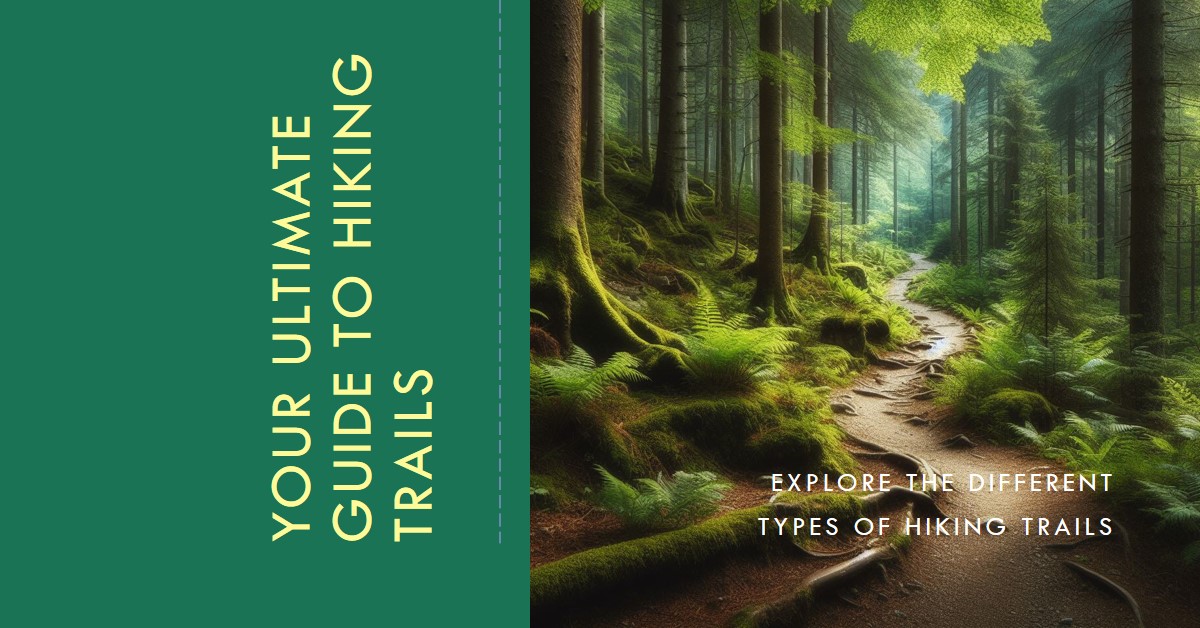Embarking on a hiking adventure? Enhance your experience and conquer the trails with confidence by mastering the use of a walking stick. This simple yet powerful tool can provide stability, reduce fatigue, and even offer an upper body workout. Let’s delve into the art of hiking with a walking stick and explore expert tips to make the most of your outdoor adventures.
Whether you’re a seasoned hiker or a beginner, a walking stick can be a game-changer. It can transform your hiking experience, providing stability on uneven terrains, reducing the impact on your joints, and even enhancing your stepping power. Let’s explore the benefits and techniques of using a walking stick for hiking.
Table of Contents
The Power of a Walking Stick: Benefits for Hikers
Using a walking stick while hiking can significantly enhance your experience. It offers improved stability and balance, acting as an additional point of contact with the ground. This can be particularly beneficial when navigating uneven terrains, reducing the risk of slips or falls.
But the benefits don’t stop there. A walking stick can also help reduce the impact on your joints. It absorbs some of the shock when you step, decreasing strain on your knees, ankles, and hips. This is particularly beneficial when hiking downhill or on rugged trails.
Moreover, a walking stick can enhance your stepping power, allowing you to tackle steep inclines with greater ease. And let’s not forget the added bonus of an upper body workout. As you use the stick for support and balance, your arms, shoulders, and back muscles are engaged, contributing to a more comprehensive workout.
Choosing Your Hiking Companion: How to Select the Right Walking Stick
When it comes to hiking, having the right gear is essential, and a walking stick is no exception. The right walking stick can greatly enhance your hiking experience. But how do you choose the perfect one?
Consider the terrain and your hiking style. If you often hike on rugged and uneven terrain, opt for a walking stick with a shock-absorbing mechanism. The optimal height and length of the stick depend on your height; make sure the stick is at a comfortable height, allowing your arm to rest at a 90-degree angle.
Material and weight are other significant factors to consider. Walking sticks can be made from various materials such as aluminum, carbon fiber, or wood. Aluminum and carbon fiber sticks are lightweight and durable, while wooden sticks offer a classic and natural feel. Choose the material that best matches your preferences and hike intensity.
The handle and grip options also play a vital role. Select a handle that fits comfortably in your hand and offers a secure grip. Foam, cork, and rubber are popular handle materials, each providing different levels of cushioning. Test different grip options to find the one that feels most comfortable to you.
Mastering the Art of Hiking with a Walking Stick: Proper Techniques
Maximize your hiking experience by utilizing a walking stick with proper technique. Enhance stability and reduce strain on your joints by using it as a support and maintaining a comfortable grip.
Proper technique for hiking with a walking stick is crucial to ensure maximum support and balance during your hikes. Holding the walking stick correctly is the first step in using it effectively. Grip the handle firmly but not too tightly, keeping your fingers relaxed. Match each step with the opposite arm, meaning that when your left foot moves forward, your right arm should swing forward with the walking stick, and vice versa. This helps to maintain a rhythm and balance while hiking. Additionally, choosing the correct timing for stick placement is important. Plant the stick slightly ahead of your foot as you step forward, allowing it to bear some of your weight. When hiking uphill, adjust the length of your stick to be shorter to provide better stability. On the other hand, when hiking downhill, lengthen the stick slightly to give more support. Following these techniques will ensure a comfortable and safe hiking experience with your walking stick.
Caring for Your Walking Stick: Maintenance Tips
After a long hike, it is important to give your walking stick a proper clean to keep it in good condition. Start by wiping off any dirt or debris using a damp cloth. For stubborn dirt, use a mild soap and water solution. Remove any excess moisture and allow the stick to air dry completely before storing.
Regularly inspect your walking stick for any signs of wear and tear. Check for cracks, splintered wood, or loose fittings. If you notice any damage, it is essential to address it promptly. Repair or replace any broken parts to ensure the stick remains safe and functional.
The tips of your walking stick experience significant wear and may need replacement from time to time. Inspect the tips for signs of excessive wear or damage. If needed, replace them with new tips to maintain proper traction and stability while hiking.
To enhance your comfort, consider customizing your walking stick. You can add grip tape or wraps to the handle area to improve grip and reduce strain on your hands. Adjust the height of the stick to ensure it is suitable for your height, allowing for a more comfortable and efficient hiking experience.
Essential Hiking Gear to Bring Along with Your Walking Stick
When preparing for a hike with a walking stick, it’s important to have the right gear. Start with hiking shoes with good traction to ensure stability and grip on uneven terrain. Make sure to check the weather forecast and choose appropriate clothing to stay comfortable and protected from the elements.
Equally important is having navigation tools and maps to help you stay on track and avoid getting lost. A first aid kit is crucial for any hike, as it can come in handy in case of accidents or injuries. Additionally, pack emergency supplies such as a flashlight, whistle, and extra food and water.
By having these essential items, you can fully enjoy your hiking experience while benefiting from the support and stability provided by your walking stick.
Safety First: Precautions When Hiking with a Walking Stick
Proper footwear is essential when hiking with a walking stick. Make sure to wear well-fitting shoes or boots that provide good ankle support and have a sturdy grip. This will help prevent slips and falls, especially on uneven or slippery terrain.
When using a walking stick during a hike, it’s important to be aware of your surroundings. Pay attention to any obstacles or hazards on the trail, such as loose rocks or tree roots. Keep your eyes on the path ahead and use the walking stick to maintain balance and stability.
Managing uphill and downhill descents can be challenging, but with a walking stick, it becomes easier. When hiking uphill, use the walking stick to support your body weight and provide stability. When going downhill, use it as a brake by placing it in front of you and leaning on it slightly.
When using a walking stick, proper weight distribution is crucial. Ensure that you’re not putting all your weight on the stick, but rather using it as a support to maintain balance. Your weight should be evenly distributed between the walking stick and your legs.
Advanced Techniques to Master Hiking with a Walking Stick
When hiking on challenging terrains, using a walking stick can provide balance and stability. By incorporating the stick into a rhythm, you can effectively enhance your hiking experience. This rhythm helps distribute body weight and reduces strain on the joints, making the hike more efficient. Utilizing the Walking Stick for Balance on Challenging Terrains is crucial as it acts as an extra point of contact, giving you stability on uneven surfaces. It provides support on steep uphill and downhill sections, preventing slips and falls. Moreover, the stick can be adapted for crossings and obstacles. It can assist in traversing streams, jumping over small gaps, or navigating rocky terrains.
Not only does a walking stick aid in balance and obstacle crossing, but it also offers an opportunity for upper body strengthening exercises. By engaging the muscles in your arms, shoulders, and back, you can get a full-body workout while hiking. These exercises improve overall stability and endurance, allowing you to tackle more challenging trails. So get your walking stick, master advanced techniques, and enjoy the benefits it brings to your hiking adventure.
Hiking Trails That Are Ideal For Using Walking Sticks
Using a walking stick can provide stability and support on hiking trails with uneven terrain and steep inclines. When encountering steep climbs or descents, walking sticks help distribute weight and provide balance, reducing strain on the knees and ankles. They also offer added stability on uneven terrain, such as loose rocks or tree roots, preventing slips and falls. By planting the walking stick ahead of each step, hikers can confidently navigate challenging sections of the trail and maintain a steady pace.
Walking sticks are particularly useful on rocky or slippery trails. They allow hikers to test the stability of the ground ahead and provide additional traction when crossing slippery or unstable surfaces. By using a walking stick to steady themselves on rocks or avoid slick patches, hikers can reduce the risk of injuries and maintain a steady footing throughout the hike.
For hikers embarking on multi-day hiking routes, using a walking stick can provide invaluable support. The added stability and reduced strain on joints can help mitigate fatigue and prevent injuries during long-distance treks. Additionally, walking sticks can assist with maintaining balance when carrying a heavy backpack, resulting in a more comfortable and enjoyable hiking experience.
Trails that involve stream crossings or scrambling sections can benefit from the use of a walking stick. When crossing streams, a walking stick can help hikers maintain balance on slippery rocks and gauge water depth. In scrambling sections, where hands and feet are both needed for climbing, a walking stick can be secured to the backpack or temporarily used as an aid to navigate tricky terrain, enhancing safety and confidence.
Frequently Asked Questions On How To Use A Walking Stick For Hiking
How Should I Choose The Right Walking Stick For Hiking?
Choosing the right walking stick for hiking involves considering factors such as height, weight, terrain, and personal preference. Look for a lightweight, adjustable stick with a comfortable grip. Test it out to ensure it provides stability and support while hiking.
Can A Walking Stick Help Improve Balance While Hiking?
Yes, a walking stick can significantly improve balance while hiking. It provides an extra point of contact with the ground, aids in stability, and helps distribute weight more evenly. By reducing strain on your legs and joints, a walking stick can enhance your overall hiking experience.
What Are The Proper Techniques For Using A Walking Stick While Hiking?
When using a walking stick for hiking, grip it firmly with your hand at a comfortable height. Plant the stick on the opposite side of your leading foot, providing support as you navigate challenging terrain. Take small steps and let the stick bear some of your weight to minimize leg fatigue.
Conclusion
To sum up, incorporating a walking stick into your hiking routine can greatly enhance your experience and provide numerous benefits. By serving as an additional point of contact, it improves balance, reduces strain on your joints, and increases stability on uneven terrains.
This simple tool can also double as a helpful tool for stream crossings or as a defense against wildlife. So, don’t hesitate to give a walking stick a try and elevate your hiking adventures to new heights. Happy trails!














